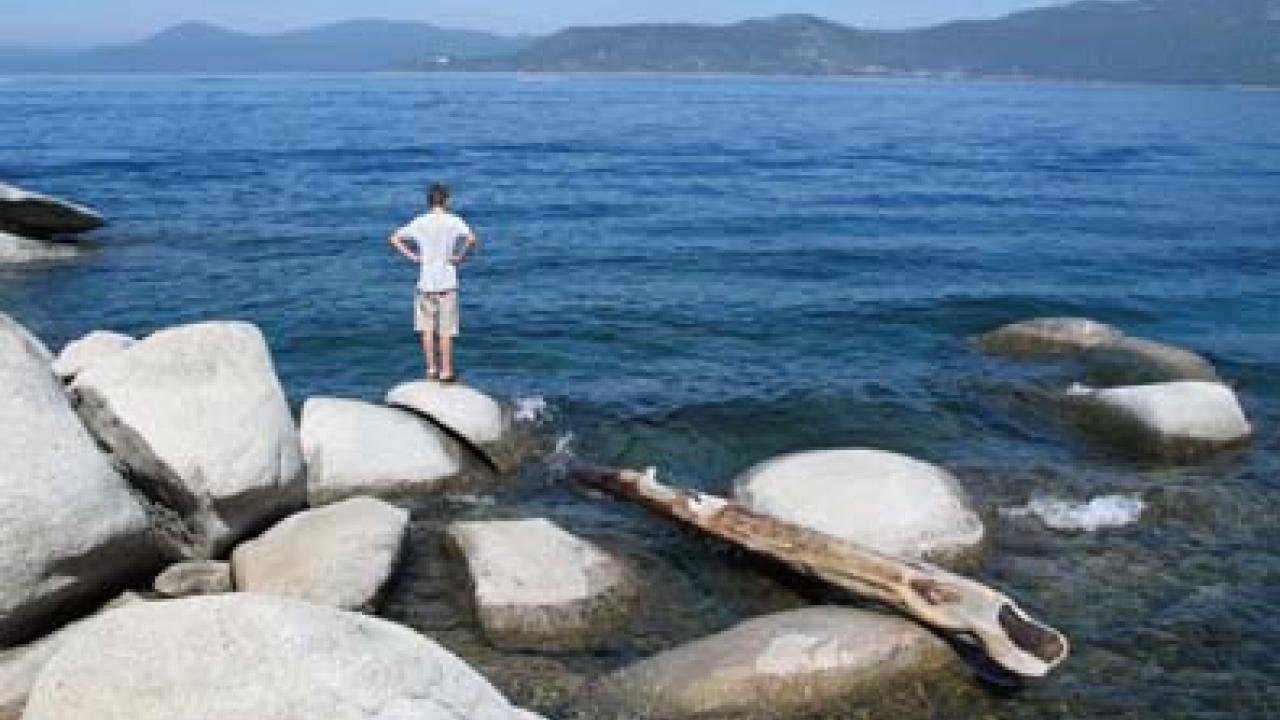Lake Tahoe was clear to an average depth of 69.6 feet in 2008, according to UC Davis scientists who have monitored the lake since 1968. That keeps the clarity measurement in the range where it has been for about the past eight years.
When measurements began in 1968, a white Secchi disk lowered into the lake was visible at an average depth of 102.4 feet.
Last year UC Davis reported that data since 2001 suggested lake clarity was not declining as fast as it had been. That encouraging finding is supported by the 2008 average.
Individual clarity measurements in 2008 ranged from a maximum depth of 122.2 feet on April 24 to a minimum of 36.9 feet on Aug. 5. In fact, the lake was much less clear than normal during the entire period from mid-July to mid-August, possibly because of smoke from California wildfires, said John Reuter, associate director of the UC Davis Tahoe Environmental Research Center.
The typical Secchi depth in that same summer period from 2003 to 2007 was 50 to 65 feet. But in 2008, the depth was 36.9 feet to 46.8 feet.
The overall summer (June-September) clarity depth was also very shallow: at 50.5 feet — the shallowest measured since monitoring began in 1968.
Smoke from wildfires elsewhere in California drifted into the Tahoe Basin and hung around for weeks last summer. Prolonged fallout of ash particles could have both blocked light penetration into the water and fed the lake’s algae, which absorb sunlight and reduce water clarity.
“What 2008 highlighted is the impact that wildfires and other factors outside our direct control can have on Lake Tahoe. While progress is being made in both understanding and addressing the root causes of clarity decline, the path to achieving the desired clarity will not be a straight one,” said Geoff Schladow, director of the Tahoe Environmental Research Center.
UC Davis and many other academic institutions and public agencies are working together with the private sector to restore and preserve the Tahoe Basin ecosystem. Led by the Tahoe Regional Planning Agency, the collaborative Environmental Improvement Program is a public-private partnership rivaling the most ambitious of U.S. restoration initiatives in its scope.
“We are encouraged that the long-term trend showing clarity loss slowing has held,” said Joanne Marchetta, executive director of the Tahoe Regional Planning Agency. “Despite the apparent impact seen from wildfires outside the basin last year, Lake Tahoe’s future appears hopeful.”
UC Davis researchers measure the lake’s clarity with a Secchi disk every seven to 10 days at two fixed locations. The depth at which the white disk, the size of a dinner plate, disappears from sight is referred to as the Secchi depth.
Their long-term research strongly indicates that Lake Tahoe’s long-term clarity loss is caused by fine particles and nutrients in the lake. The particles and nutrients enter the lake through erosion, runoff and atmospheric deposition. Once in the lake, they affect clarity by scattering light and by fueling the growth of algae, which absorb light.
”With our Environmental Improvement Program and other initiatives, we feel we may have turned the corner in the effort to restore lake clarity to levels seen a generation ago,” Marchetta said. “With a continued commitment to the lake from all sectors, we will accomplish our goal of preserving and protecting Lake Tahoe.”
THE SECCHI SAYS
Lake Tahoe’s average annual Secchi clarity measurements since 2000:
- 2008 — 69.6 feet (21.2 meters)
- 2007 — 70.1 feet (21.4 meters)
- 2006 — 67.7 feet (20.6 meters)
- 2005 — 72.4 feet (22.1 meters)
- 2004 — 73.6 feet (22.4 meters)
- 2003 — 71 feet (21.6 meters)
- 2002 — 78 feet (23.8 meters)
- 2001 — 73.6 feet (22.4 meters)
- 2000 — 67.3 feet (20.5 meters)
Media Resources
Dave Jones, Dateline, 530-752-6556, dljones@ucdavis.edu
